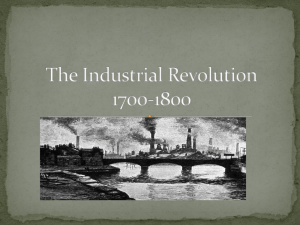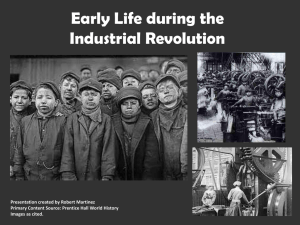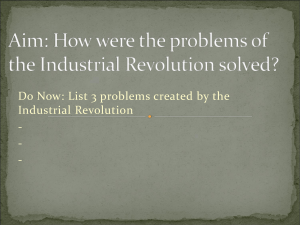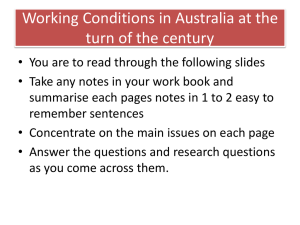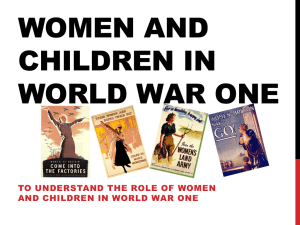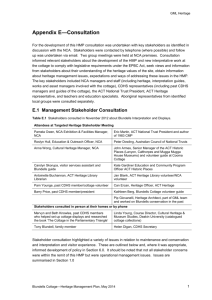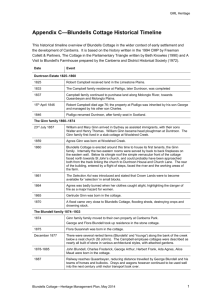Industrialism and 19th century isms group FRQ
advertisement
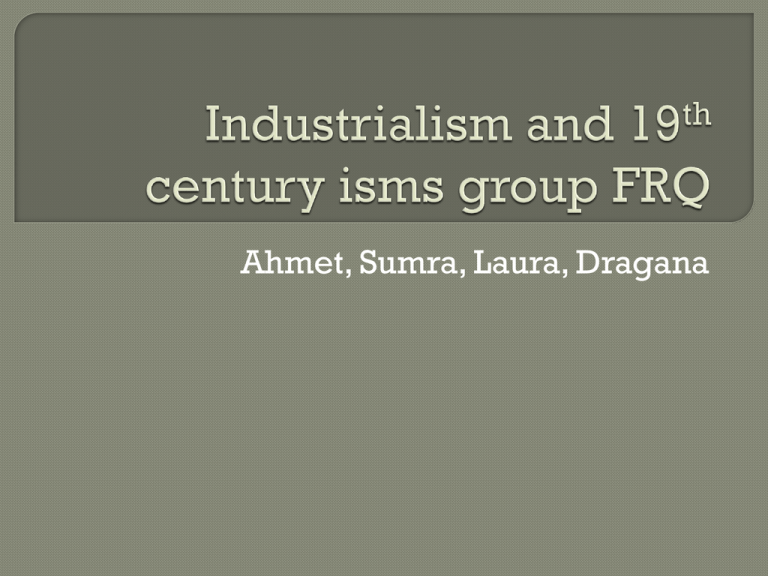
Ahmet, Sumra, Laura, Dragana Between 1750 and 1850, more and more Western Europeans were employed in cottage industry and factory production. Analyze how these two types of employment affected employeremployee relations, working conditions, family relations, and the standard of living during this period. In order to answer the question, you need to have knowledge of the cottage industry and factory production during the time period. You would then need to explain how these jobs affected the aspects of European life listed (employer-employee relations, working conditions, family relations, and the standard of living. 1764- Richard Arkwright created the “Water Frame” to produce yarn faster and to the correct even thickness. 1765- James Hargreaves invents the Spinning Jenny, which allowed factories to have 8 spools spun at once rather one per person. 1769- James Watt patens the “Steam Engine” which makes transport easier and leads to innovation. 1779- Samuel Crompton makes the “Crompton’s Mule by combining the “Spinning Jenny” and the “Water Frame” to produce large amounts of fine but strong string. 1793- Eli Whitney develops his “Cotton Gin”, a device to clear raw cotton, to make manufacturing less time consuming. 1801- Jacquard creates the “Jacquard Loom” which simplifies the process of manufacturing textiles. 1811- Luddit Riots broke out where workers attacked the factories and smashed machines because of poor conditions. 1830- 50% of British exports were cotton fabrics which lead to innovation and industrialization. 1833- “Factory Act "regulates child labor in mills and factories. 1844- A second Factory Act restricts child labor in factories to 6.5 hours a day. During the Industrial Revolution, society changed and became more modern by families leaving their homes in rural areas and moving into urban areas in hopes of prosperity leading to less family values, being more involved in society, and more modern day employer-employee relations. • Mothers had jobs and took care of children- the idea of housewives started becoming less prominent and women started sharing the role of the breadwinner • Children started working long hours and were not treated well, were overworked, and underpaid • Family members in general became much more independent and did not emphasize family values as much as before. Young adults began being able to leave home and explore paths in the city/ have their own careers Cottage industry lacked any employee-employer relations because of how the system was based. However, in factory production, there was a boss and an employee, so the employer-employee relations were dependent on how the employer treated the employee and working conditions. Cottage industry was a long process and could take months or years to produce products, however they were more comfortable working conditions.In factories, working conditions are horrible, but products were finished much faster to get to people demanding them. Lots of products that were not need were made which led to consumerism. Good working conditions in cottage industry because people working in their own homes, based on a “family” system. Cottage industry was more rural while factories took place in urban settings, and had dangerous and impersonal settings. Women began to work in factories, along with children. Children operated dangerous, heavy machinery and were used to crawl into small spots to fix machines. Factories had no rights for workers and gave them bad working conditions/environment. People continued to work because they had to. Cotton industry demonstrated the Old Regime and didn’t cause anyone to move forward. It was traditional work. Factories introduced new machinery and developed the relationship between boss and employee, moving to modern times. Cottage industry had people work at home, many people had jobs farming as well as in the cottage industry. Factories had many new technological advances, however people had to work at factories, sometimes for 12 hours at a time and didn’t have time for much else. People saw their families less because they were working so much. It was expensive for many families so they had to work at all day to provide for their family. Less traditional family values, and step towards modern family life. Cities became very dirty and overcrowded due to the migration from rural areas to urban. People had to movie in order to be close to factories. This led to lots of disease, famine, and sickness among the population.

